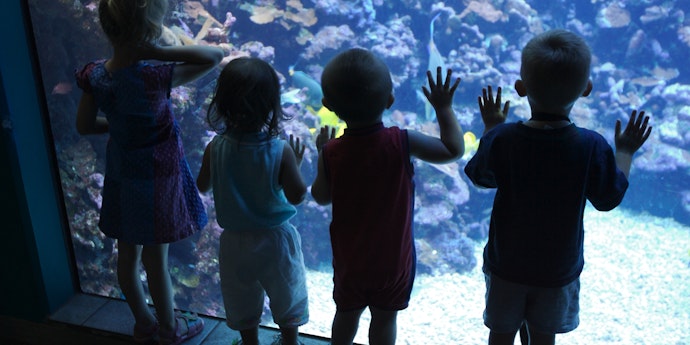Virtual field trips can be a wonderful addition to an institution’s educational offerings, helping you to broaden your reach, even when visitors can’t make it to your institutions. There are three main types of virtual field trips: live streaming events, live group tours and recorded tours. Each has benefits and drawbacks and can be used alone or in combinations.
Live virtual field trips do not require a ton of equipment, just a webcam, laptop and a streaming video service. We recommend zoom because it is very reliable, attendance can be controlled or open, and it can be accessed from almost any device, including a landline.
Live Streaming Events
Live stream events are events that people watch as you film them. They are fun because participants are able to ask questions (mostly via chat) in real time, and it can feel like a collaborative community building event. Read alouds, animal feedings, performances, experiments and demonstrations make wonderful livestreams.
We recommend using either Facebook Live or YouTube Live to host a livestream event. Set a date and publicize your event on your social media pages and website, including a link to your Facebook page or your YouTube Channel. About 30 minutes before your event starts, set up your camera so that it captures yourself and the objects, creatures or scene you’d like to highlight.
Start your stream by welcoming your audience, and discussing how you will be handling questions. We recommend having people submit questions through the chat and addressing them at the end, so you don’t get off track during the event. Remember popular events have thousands of people engaging, so your chosen method should be easy to maintain at a larger scale. Finish the event by thanking your audience and mentioning follow up events or resources.
To see this in practice, check out the Maritime Aquarium for a live Q&A with their animal husbandry team at 3pm EST and the Cincinnati Zoo for a live home safari also at 3pm EST.
Live Virtual Field Trips or Tours
Live virtual field trips are programs where a class virtually joins an educator for a live program at a specific field trip site. While live streaming events are usually free, many institutions charge for live virtual field trips. You can use the curriculum you created for your in person field trips, or you can tailor programs specifically to a virtual audience.
We recommend using Zoom for virtual field trips. It is free for a basic subscription or under $20 a month for a more robust subscription. Attendees can join a Zoom meeting from any device.
To run live virtual field trips you need to have a set of offerings live on your website and a method to organize and schedule them. These events require a dedicated educator and a dedicated space so they need to be scheduled. We are of course partial to using the Explorable Places scheduling platform to do this, but you can use whatever system you have in place for your in person field trips.
During a basic live virtual field trip you can bring your webcam/laptop setup on a cart and have an ongoing dialogue with the students in their classroom about your space and/or artifacts as you navigate the space.
You can build on these programs in a variety of ways. A virtual field trip can include live demonstrations or experiments, or other media. You resources that teachers can print for students to use during the field trip, or request that a teacher has materials for students to use.
A more complicated virtual field trip can build off the traveling trunk idea. You can provide a set of artifacts or resources for the teacher and students to examine while you lead a series of activities during the trip.
There are a number of organizations already doing this very well. We recommend checking out the National WW2 Museum for examples of live virtual history field trips, the New York Hall of Science for examples of live virtual science field trips, and the Buffalo Zoo for an example of a zoo field trip.
Recorded Virtual Field Trips
There are a variety of ways to engage audiences with pre recorded content. You can create videos to showcase a demonstration or to give a walk through of an exhibit. The tools required are minimal, you just set up a webcam and post the videos to your website or google. You can even record your live events and put them up for people to see later.
A virtual tour is more in depth. Many institutions do this using technology that is similar to Google street view. On your virtual map, online visitors can ‘tour’ your institution via their computer. See this in action with the Museum of Natural History’s virtual tour.
